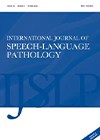
Journal Reviews
How much does it cost to simulate speech and language therapy placements?
The Royal College of Speech and Language Therapists report that 20% of speech and language therapy positions are unfilled in the UK. Consequently, there is an urgent need to offer as many training courses as possible to fill these gaps....
Still not smelling
Post-Covid anosmia/hyposmia is a troublesome persistent symptom for lots of patients. Management is still elusive. This was a nationwide survey of ENT practitioners. Of the 715 surveyed members, only 7.4% responded. Most performed a nasal endoscopy, 60% ordered an MRI...
Corticosteroid prescribing in ENT - are we at risk of being sued?
Of medications leading to malpractice claims, corticosteroids comprise the third most common. They are used widely and have a significant side-effect profile: hypertension, lipodystrophy, diabetes, avascular necrosis of the femoral head, peptic ulceration and psychiatric reactions to name but a...
Patients with auto-immune Meniere’s disease more likely to respond to intratympanic steroids
The authors retrospectively reviewed the duration of symptom control after intratympanic dexamethasone (IT) injections in 27 patients with Meniere’s disease (MD) over a six-year period. The patients received two IT injections of 3.3mg/ml of dexamethasone one-to-two weeks apart. Eleven patients...
Are quinsies worth draining?
Recent data is providing accumulating evidence that treatment failure in the management of peritonsillar abscesses (PTAs, aka ‘quinsies’) is similar when these are managed with medical treatment (MT) alone versus MT plus surgical drainage (M+ST). However, in the absence of...
Role of intratympanic corticosteroid for treatment of Bell’s palsy and Ramsay Hunt syndrome
Acute peripheral facial palsy occurs annually in 30 in 1,000,000 individuals in the general population. Bell’s palsy and Ramsay Hunt syndrome account for about 70% of cases of peripheral facial palsy. They are believed to be caused by viral reactivation...
Automated contouring of costal cartilage for pinna reconstruction – a proof of concept
Presently there are limited applications of automation within operative ENT. This proof-of-concept study explores the use of an augmented robot to contour cadaveric costal cartilage for auricular reconstruction. Ordinarily this task is performed manually. This takes considerable time due to...
Location, location, location: How to get the steroid where you need it, in chronic rhinosinusitis
What almost all current guidelines on chronic rhinosinusitis have in common is the importance of intranasal steroid (INCS) use. However, it is increasingly understood that the efficacy of INCS depends on their efficient delivery to the point of need, i.e....
Sinus implants to treat recalcitrant polyps
It is well established that the burden of chronic rhinosinusitis on healthcare costs and patients’ quality of life is high, and that current mainstream treatment options of oral or topical steroids are not without problems. This paper compares two RCTSs...
Acute ENT activity in a teaching hospital
This Belgian prospective audit attempted to provide justification for the provision of a 24-hour emergency service at a large 1038-bed teaching hospital (with 31 ENT consultants). The authors looked at a one-month period during which 190 patients were admitted. They...
Intratympanic steroids - to give or not to give?
The treatment of idiopathic sudden sensorineural hearing loss (ISSNHL) is controversial and different modes of steroids have been tried without any universal consensus. Various authors have reported combined oral and intratympanic steroid therapy in SSNHL, with consistent results in several...
Do steroids improve outcome in acute vestibular neuritis?
The role of steroids in short and long-term recovery from acute vestibular neuritis has been a subject of debate for several years. The authors reported findings of a prospective randomised trial in 60 adult patients. Inclusion criteria were acute vertigo...

















